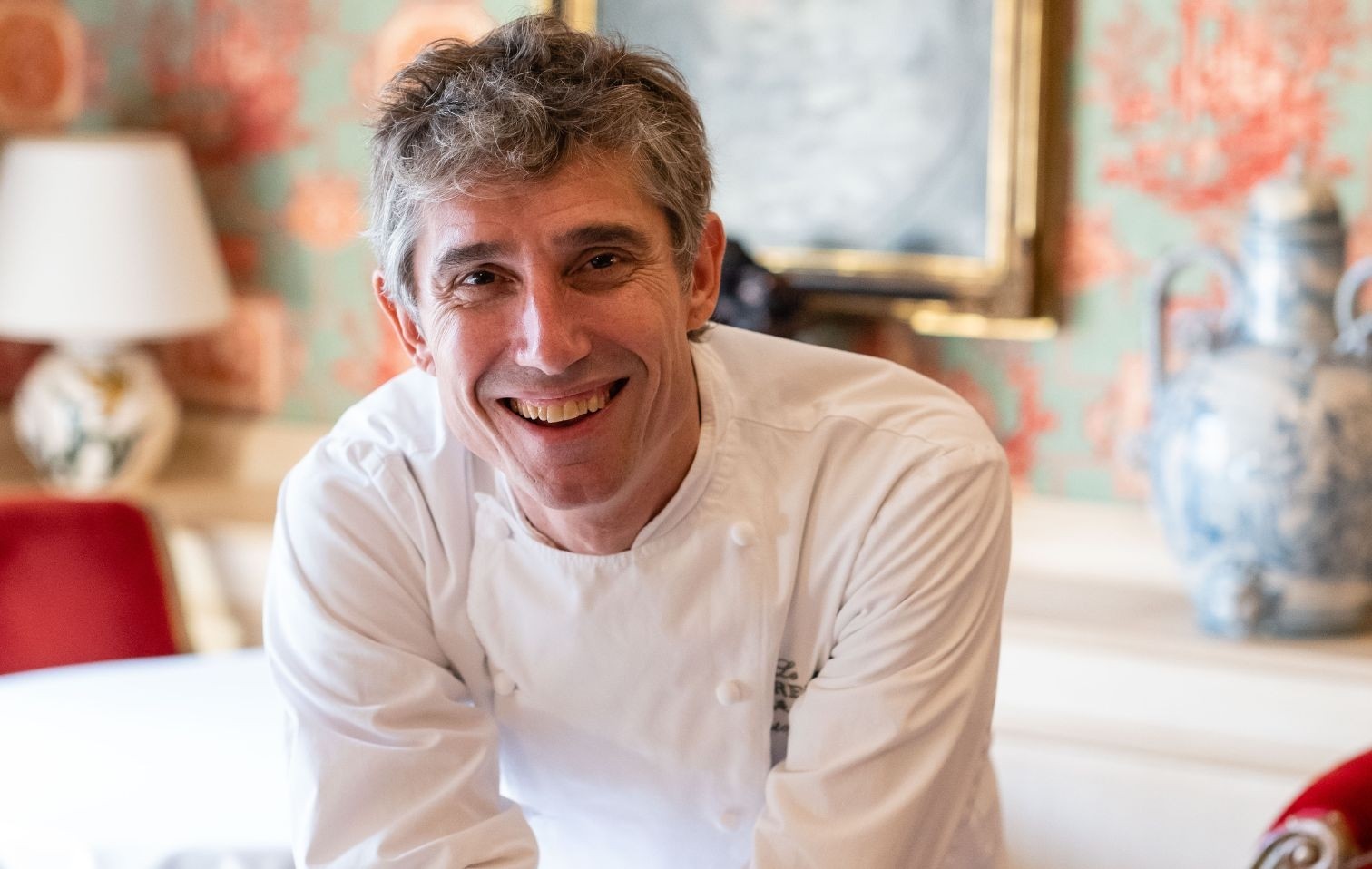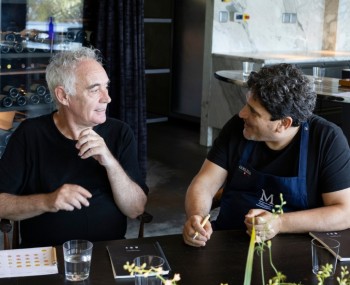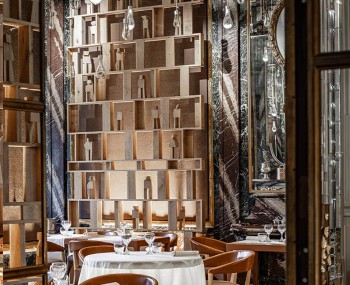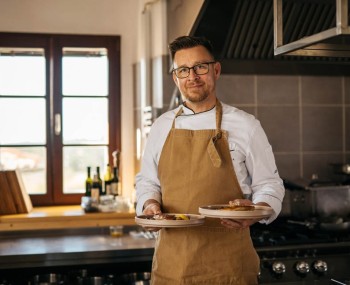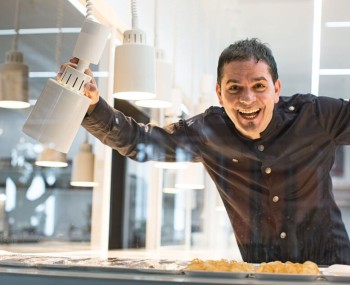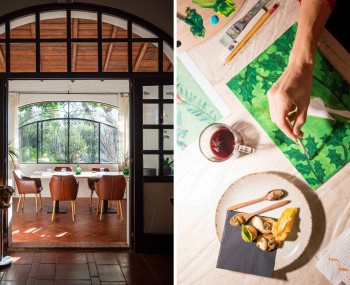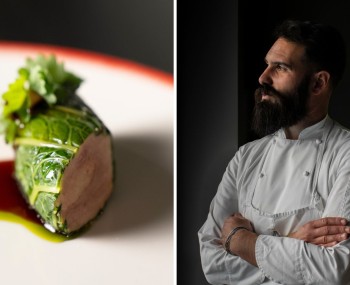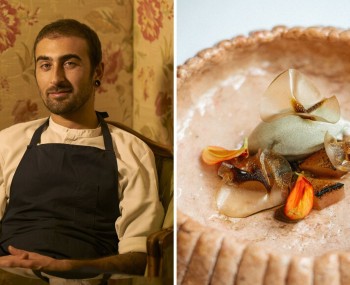One of the rare places in the world where a tailor-made dinner is a matter of fluidity, of the progression of products and techniques, in service of flavors always different and unexpected in their variations. Le Clarence is writing the history of modern French cuisine and Christophe Pelé is a standout who convinces everyone (including young people).
Cover photo: Yohann Vorillon for Le Chef Magazine
What if we played a game? Let's ask a cook we know, preferably French but not necessarily, of the average and new generation - let's cast a wide net: let's say from 25 to 50 years old - who he thinks represents the exception, the personality not yet recognized, in Paris and elsewhere, up to the level of his immense talent. In short, the chef who shuffles the cards the most, the one who walks along his own path, without being fixated on trends, lists, or international rankings. Nor does he display his latest photogenic inventions on Instagram, day in and day out. We could go on and on with the pitch.
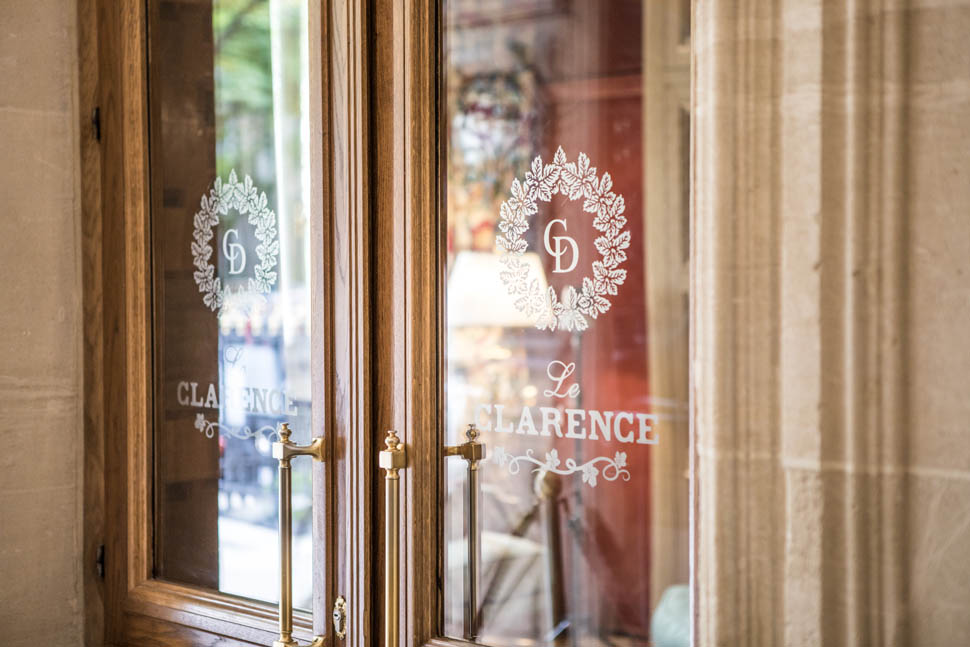
The most unique chef, less dear, who never misses a service, not at all addicted to intercontinental flights, faithfully in the kitchen every day that God commands, rarely seen fooling around on the podium of conferences, who prefers painstaking daily work at the stoves over messianic self-promotional messages. Speak up, while we spill the beans. And, do you bet? We won't be the only ones to give our vote to Christophe Pelé, so may the best win.

The Restaurant
You'll find Le Clarence, in Paris, just behind the Champs-Elysées. In a private 19th-century hotel, a timeless treasure owned by Prince Robert of Luxembourg who in 2015 conceived it, against all commercial logic, to celebrate the 80 years of the Clarence Dillon family property - does Haut Brion ring a bell?
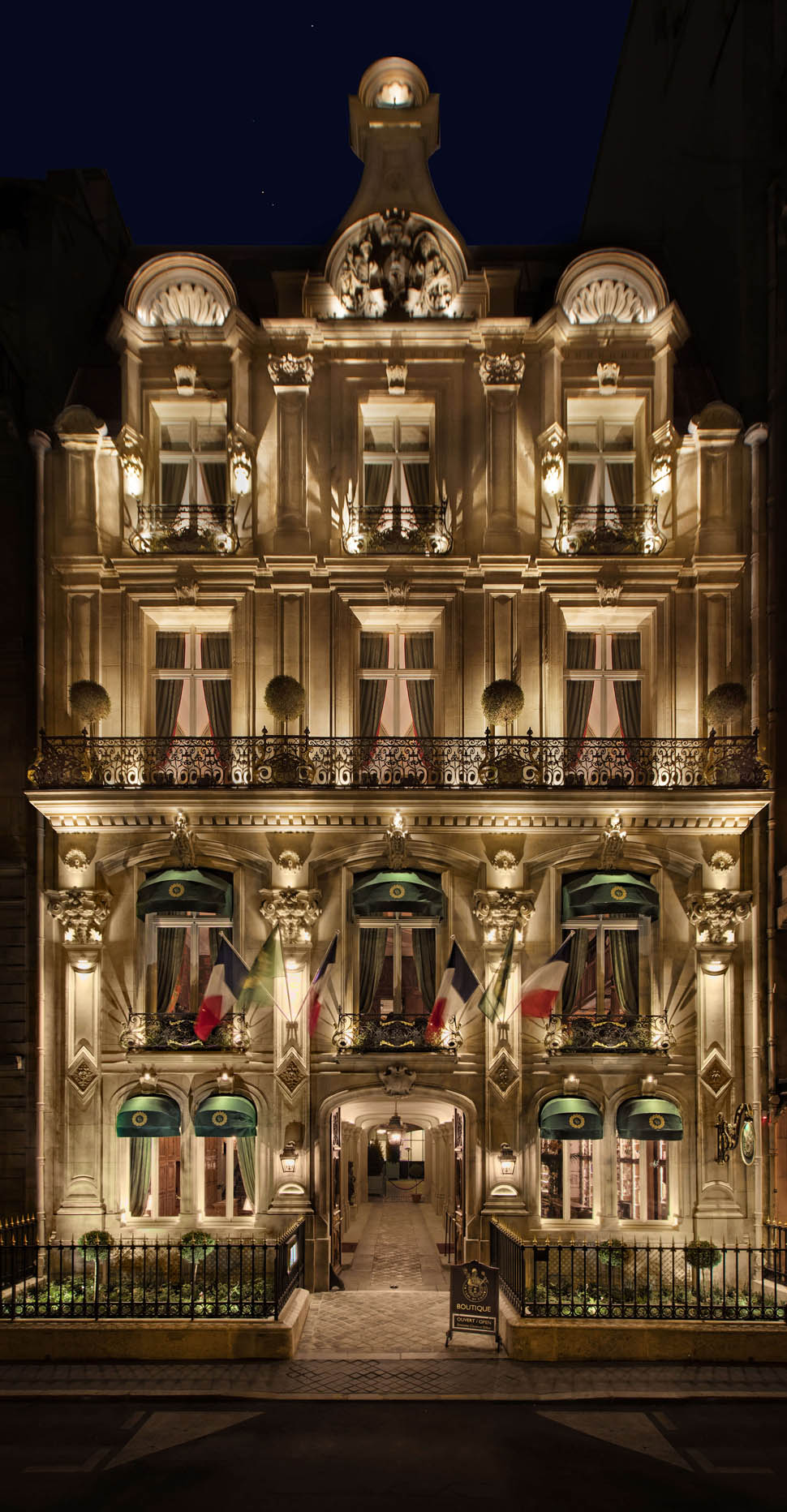
An oasis of elegance, where the contrast between the classicism of the different environments - three salons fit for noble castle dwellers, libraries and certified period paintings included - and the sharp creations of Christophe Pelé produces unusual effects of sense.
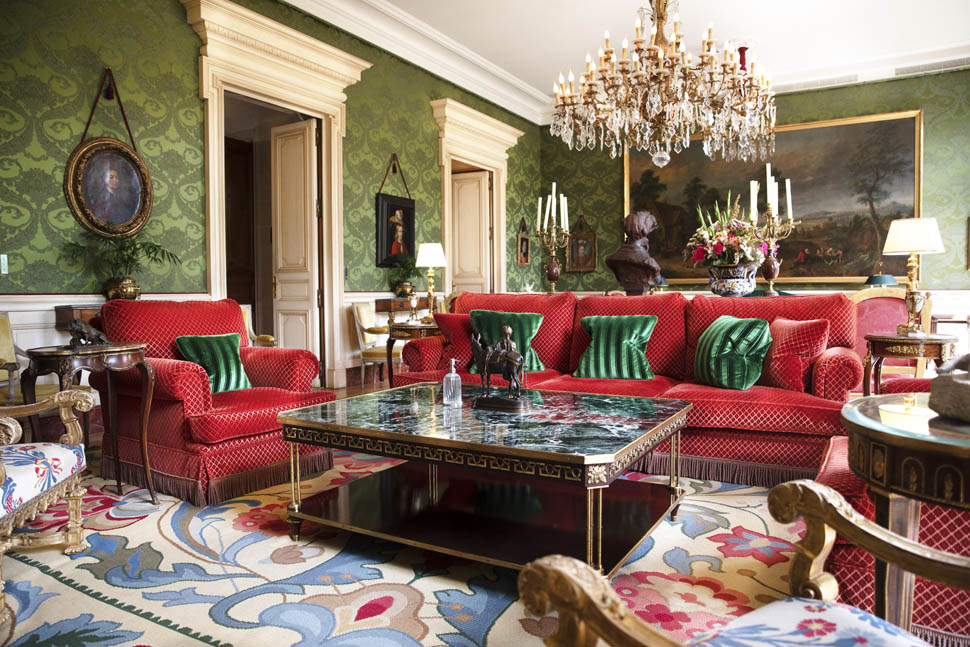
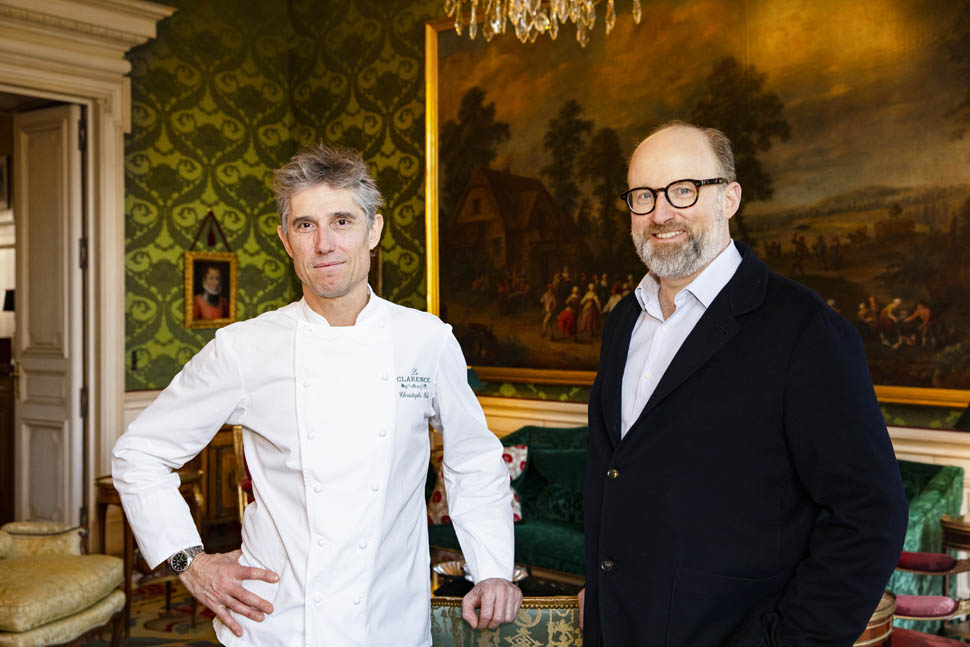
It is the sum magic of Le Clarence, the pinnacle cuisine because it is the evolutionary synthesis of thirty years of French cuisine at the highest levels. Pelé is not an outcast: he comes from the school of Bruno Cirino, an unforgettable mentor who embodied, with the brilliance historically known, on the stoves of Carpaccio at the Royal Monceau a certain spirit of the sweet new Franco-Italian style. Sharing for years with the young right-hand man the hard drive of his decade-long knowledge, the respect for seasonality and the best products as a must. We discovered Pelé like many others in an unsuspecting era under the spotlights of Bigarrade, a fine dining establishment that in 2007 rode - anticipated or accompanied: choose your preferred option - the wave of Parisian bistronomy. A burst of life, and freedom, stripping away the trappings of gastronomy in those transitional times.
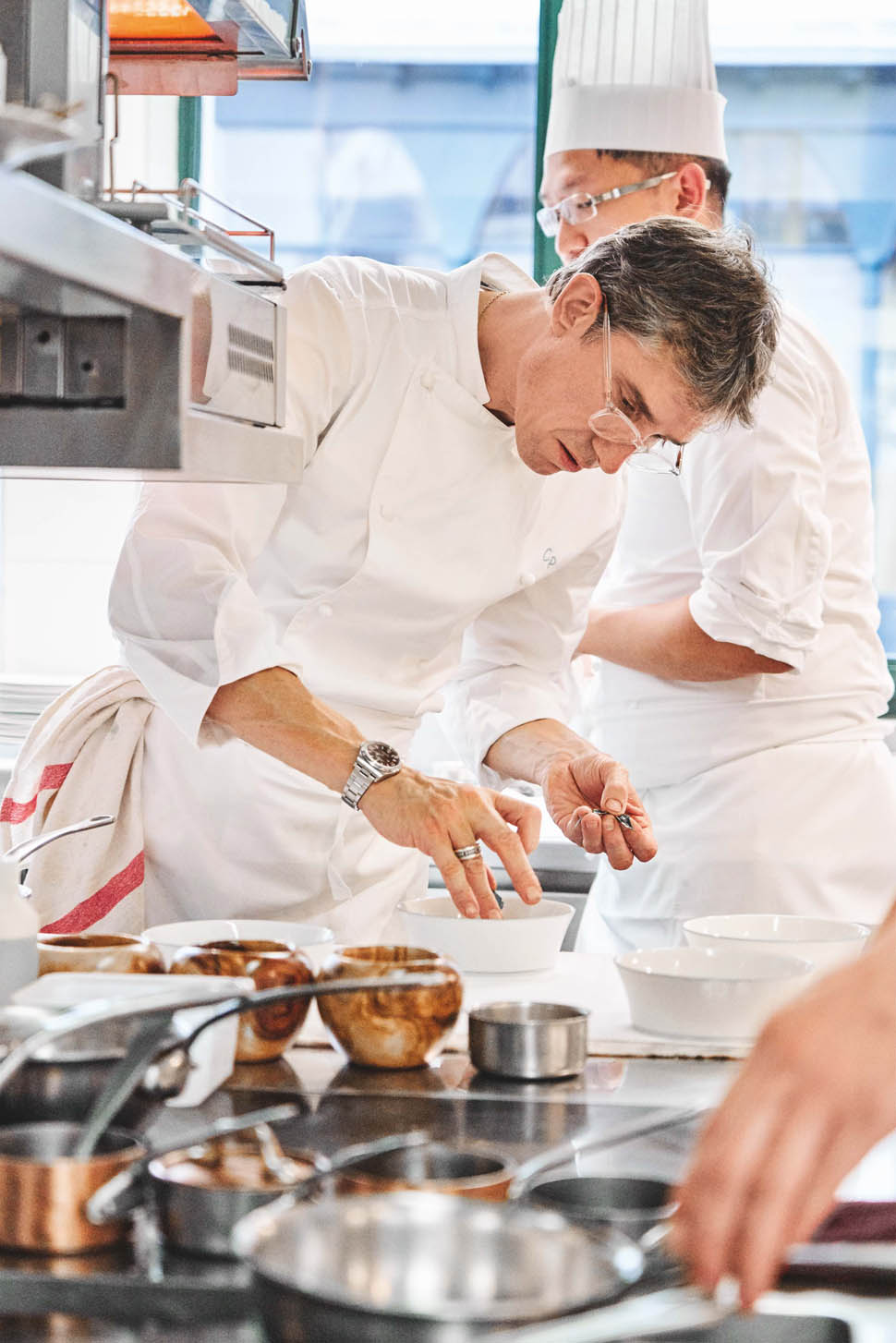
In order to cook, one must start from the essentials: from intuition, controlled improvisation, and exploration of the inherent limits of the exercise. Practicing high cuisine at almost affordable prices with a kitchen team reduced to the bone: the mission - impossible? - Pelé conquered it successfully. For years it was indeed easier to thread a camel through the eye of a needle than to find a place in his taste atelier. Especially since Michelin itself bowed, validating the singularity of his creativity with two Michelin stars. Then, after years in hard apnea ("when taken by urgency you struggle to see clearly beyond the bottom line of everyday life") it was a matter of oxygenating, leaving behind the usual (dis)comfort zone. Outside the bounds of Parisian bistronomy. In Asia, in the far East. Or by storming the besieged citadel of haute gastronomy.
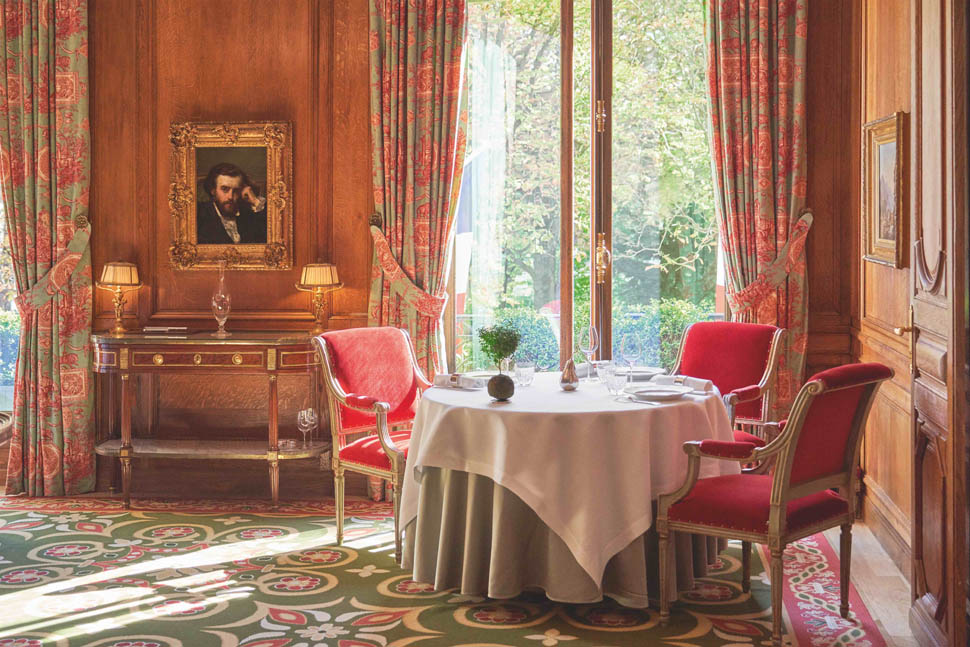
"One day, I was still shuttling between Paris and Hong Kong, it was the time when I was involved with 'Serge et le phoque,' a permanent pop-up created with Fred Peneau, the co-founder of Chateaubriand, I came to know about the Clarence project by chance. After preliminary meetings, I was asked to organize a test dinner for the Prince. I assumed I wouldn't make it, I didn't have the profile of the ideal candidate. Especially since among the applicants were all, I mean all - Ducasse, Alleno, Savoy - the greatest of France and Navarro. In the end - to the surprise of all, and mine in particular, I was the one who actually passed the exams"

"When I think back to the beginnings, to the first menus of Clarence in the autumn of 2015, I realize that there was a form of awe in the air, a fear dictated by the place so important in its patrician configuration, which made us prefer a certain classicism, perceived as natural. Which we had to progressively free ourselves from. Finding our path day after day. Today our customers themselves are the first to offer us a carte blanche without conditions."
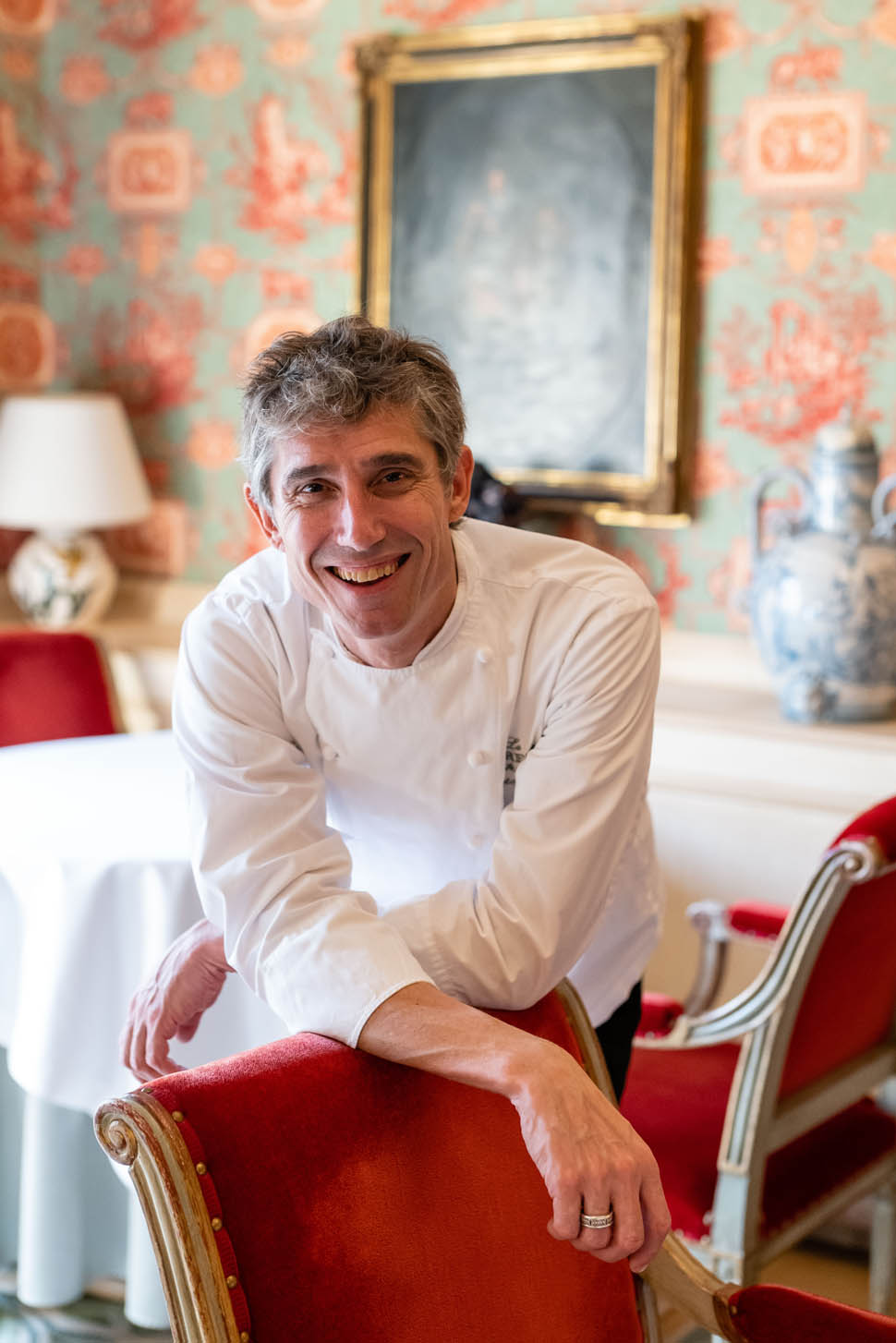
"We have fans who come to eat with us at noon three times a week. Obviously, Clarence is not an everyday restaurant. But for this reason, we are not a place only for special occasions, out of time. For me, it's important to inscribe ourselves in a context that is not at all impermeable to the rest of society. Just look at the average age of our audience, the younger generations are among the most assiduous," comments Christophe Pelé with his guttural speech that not a little resembles, for its digressions, abrupt pauses, and discursive circumlocutions, that of Pierre Gagnaire, another master of life. Then, between flights of fancy and harsh reality: "Let's get to the point: how hungry are you tonight? A little? A lot? Quite a lot?".
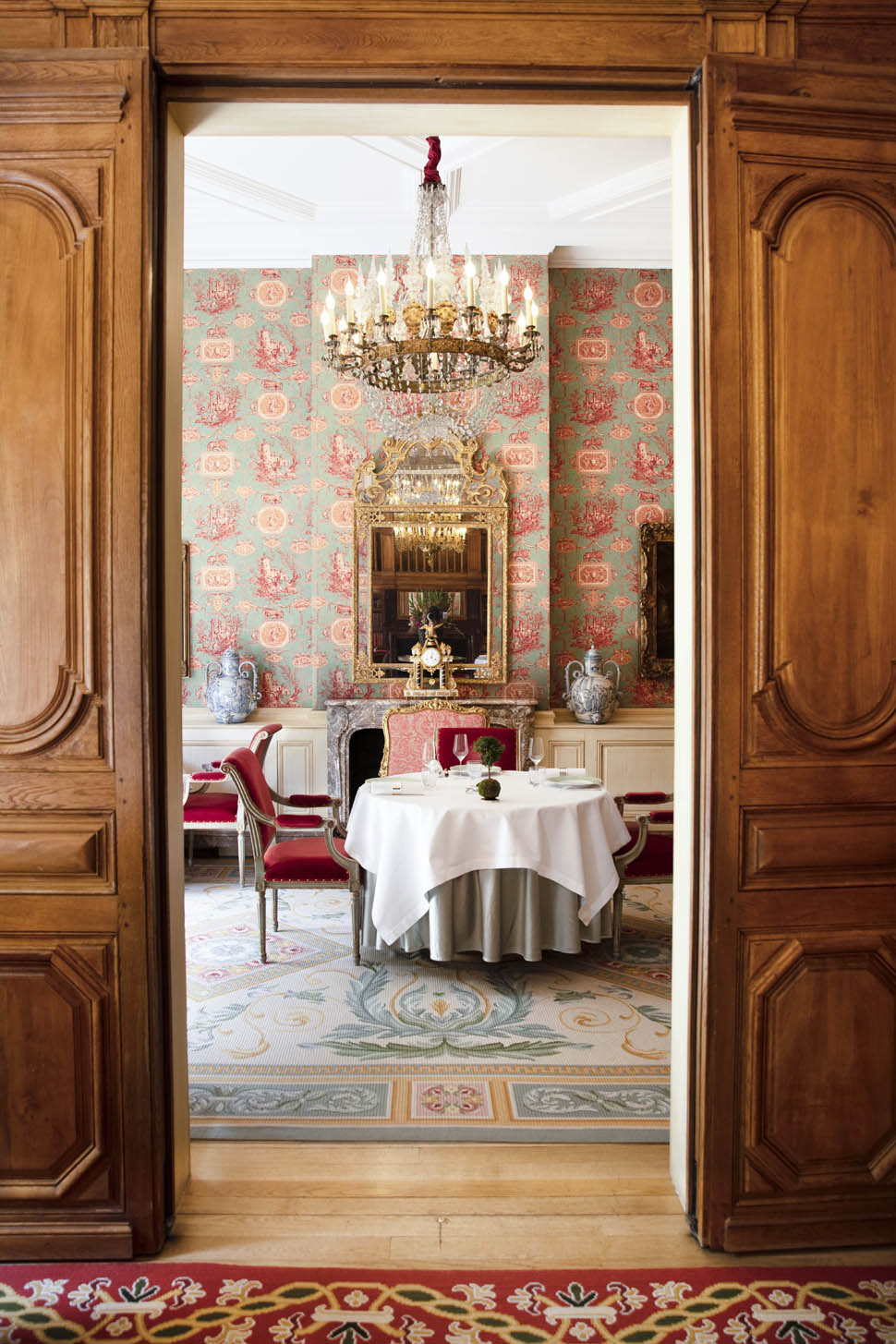
The Dishes
We are always very hungry, thanks to him - but for knowledge in particular. In an attempt to grasp, more than to understand, what Le Clarence's secret is. One of the rare places in the world where a tailored dinner and improvisation, which is never left at the threshold, is a matter of fluidity, of a progression of products and techniques, in the service of flavors that are always different, unexpected in their variations. To the preference for the verticality of overlays, a stylistic hallmark of the Pelé of the times of Bigarrade, today unfolds perhaps a more nuanced visual impact.
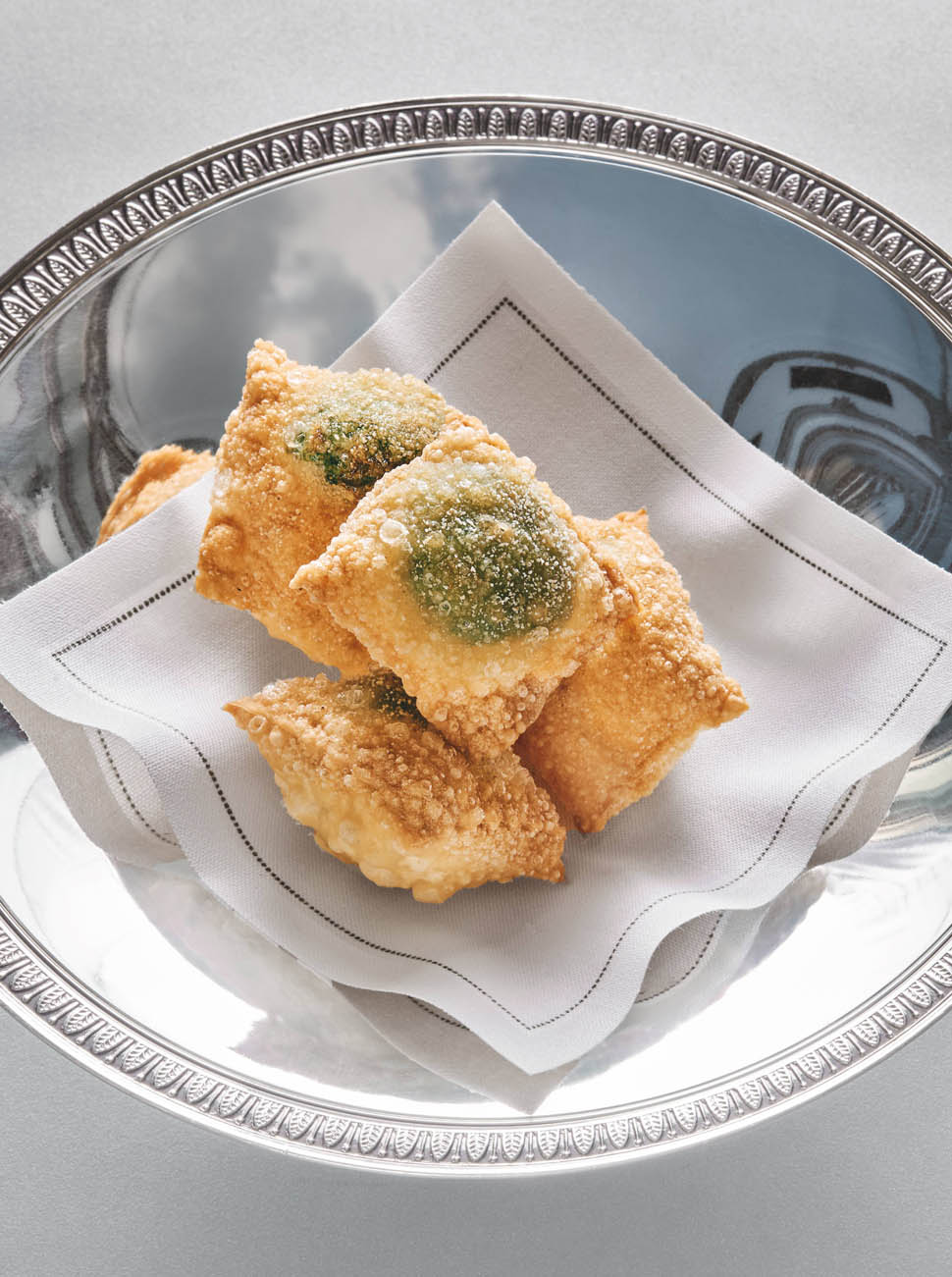
The surprise is in the detail, in the clarity of purity, of the implicit. Singularity then sparkles between the lines, between the folds of the Cuttlefish tartare where the freshness of chili conspires with finger lime and melted placed lard (what buttery animality!) along with nori seaweed crumbs and a rosy cosmos bipinnatus petal. Or in the rawness of Red Mullet with almond 'breadcrumbs', umeboshi, and tagete leaves. It is the musicality of the fugue, of the staccato, the impetuous elegance of the stroke. To the dramatic impact of the immediate, Pelé much prefers the suspension of temporality. Literary theorists can speak of "suspension of disbelief", that is, the suspension of doubt, of incredulity. Christophe Pelé succeeds like few others in refuting the improbable.

Proceeding, scan after scan - where once he would have opted for a constellation of satellite dishes - with a second and then a third serving of red mullet. First with its liver presented in a liquid ointment of persimmons and mandarins to temper its exuberant bitterness, then last but not least, the fillet, spicy just right and smoked, in a concerted embrace with shallot marrow and soy with incredible, silky effect. Following without transition, here is the mimesis of a tradition taken broadly: the magnificent Turbot, from the homeopathic initial cooking then passed under the salamander before being served whole at the table with a sliver of veal brain sprinkled with white truffle.
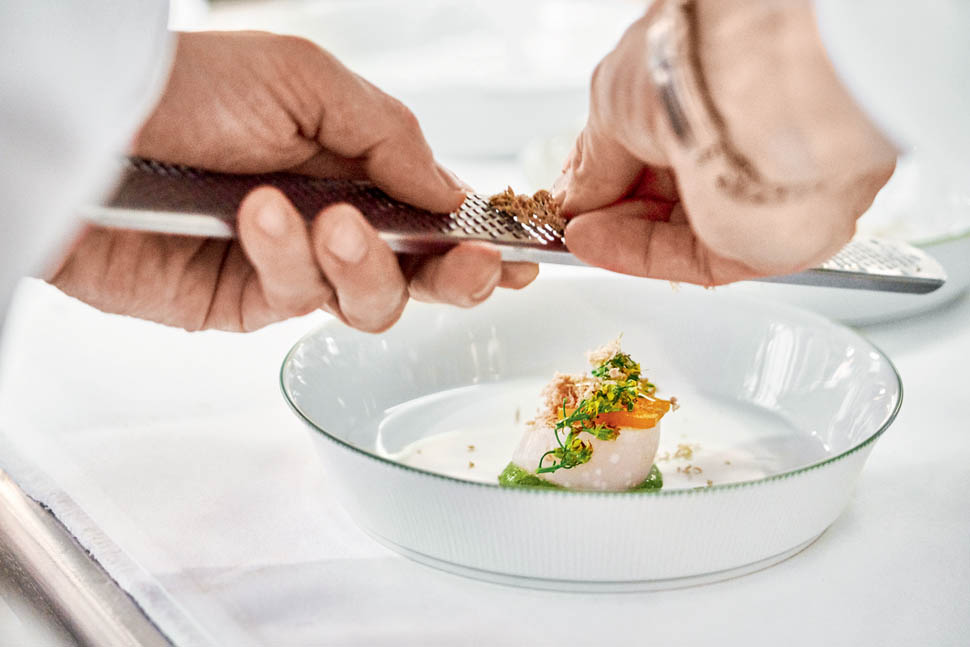
"It will be your fault if the service goes haywire tonight," says the Maître d’Hotel in passing, smiling but not overly so. "In the kitchen, the chef is getting seriously nervous. He has already changed the menu twice, reversing the products, and the order of the dishes. Andrea Capasso has even joined in, his second, you met him at Riccardo Camanini's Lido 84. Since you are not averse to offal, he would like to present his version of the Roman coratella to you." Just to further undermine the already very little rigid pentagram of the evening. And how could it be otherwise in a kitchen that, far from being an ivory tower, prefers the empathy of communicating vessels, in fact, to hierarchical verticality?
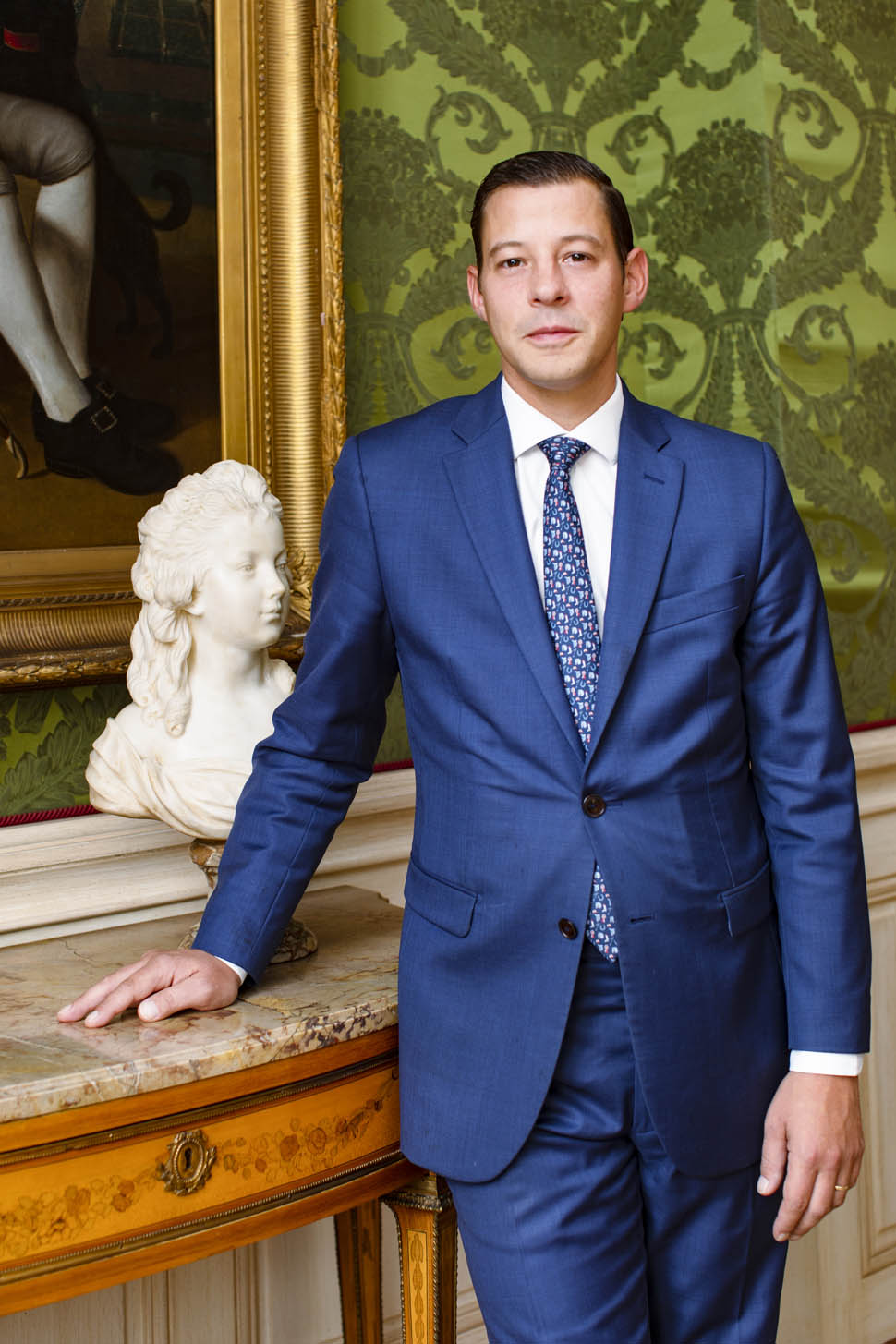
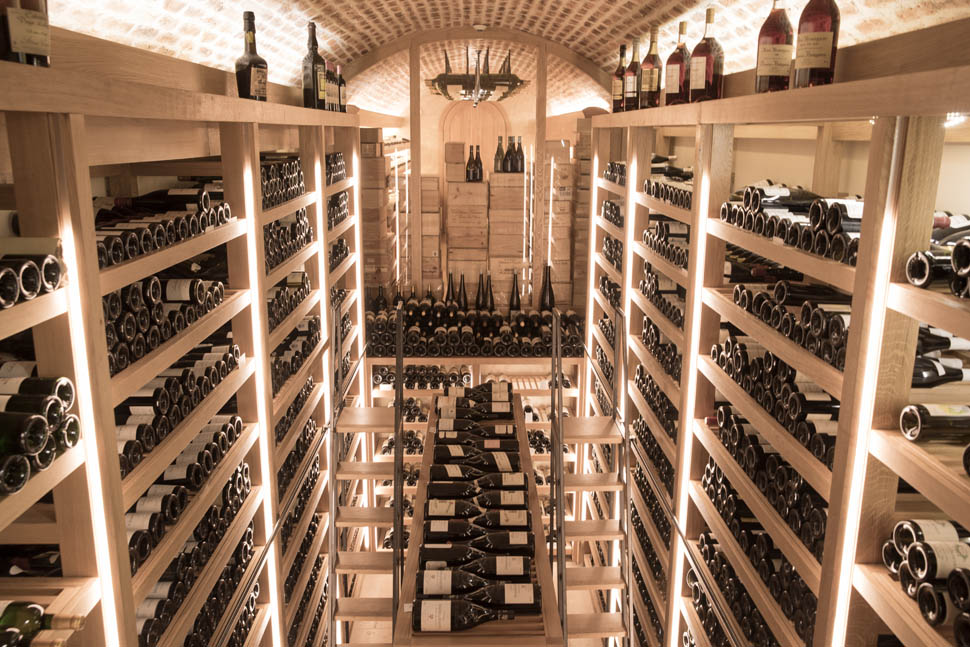
"Le Clarence's cuisine is the result of all those who make it. There are about fifteen of us, of various nationalities, with five Italians, many Latin Americans, as many Americans, and several Asians. Just a few French, a minority. Let it be clear, it is not a deliberate choice. It is difficult even for us to find motivated collaborators, ready to give their best. Believe me, most of the applications we receive are from abroad. Is it a sign of a deep crisis of trades? I couldn't say. In any case, it is increasingly difficult to recruit interesting profiles in a 'grand maison' where the watchword is truly cooked cuisine, the mise en place reduced to the minimum possible. A cuisine with all the fragrances of the moment, made to order. The menus already coded upstream and half ready when the restaurant doors open bore me to death. They are a real contradiction to the true values of our profession."

At Le Clarence, there is no risk of falling into the hands of mercenaries or thought bureaucrats. The agility of flavors goes hand in hand with the richness of contrasts. Luxury products coexist with the most ordinary ones, the plant-based ingredients transfigure into those of animal origin. From Pelé, metonymy is at home. Where else can you find a more dazzling idea than foie gras ("so so eighties") banned even for the preparation of Lièvre à la Royale, a monolithic national emblem?
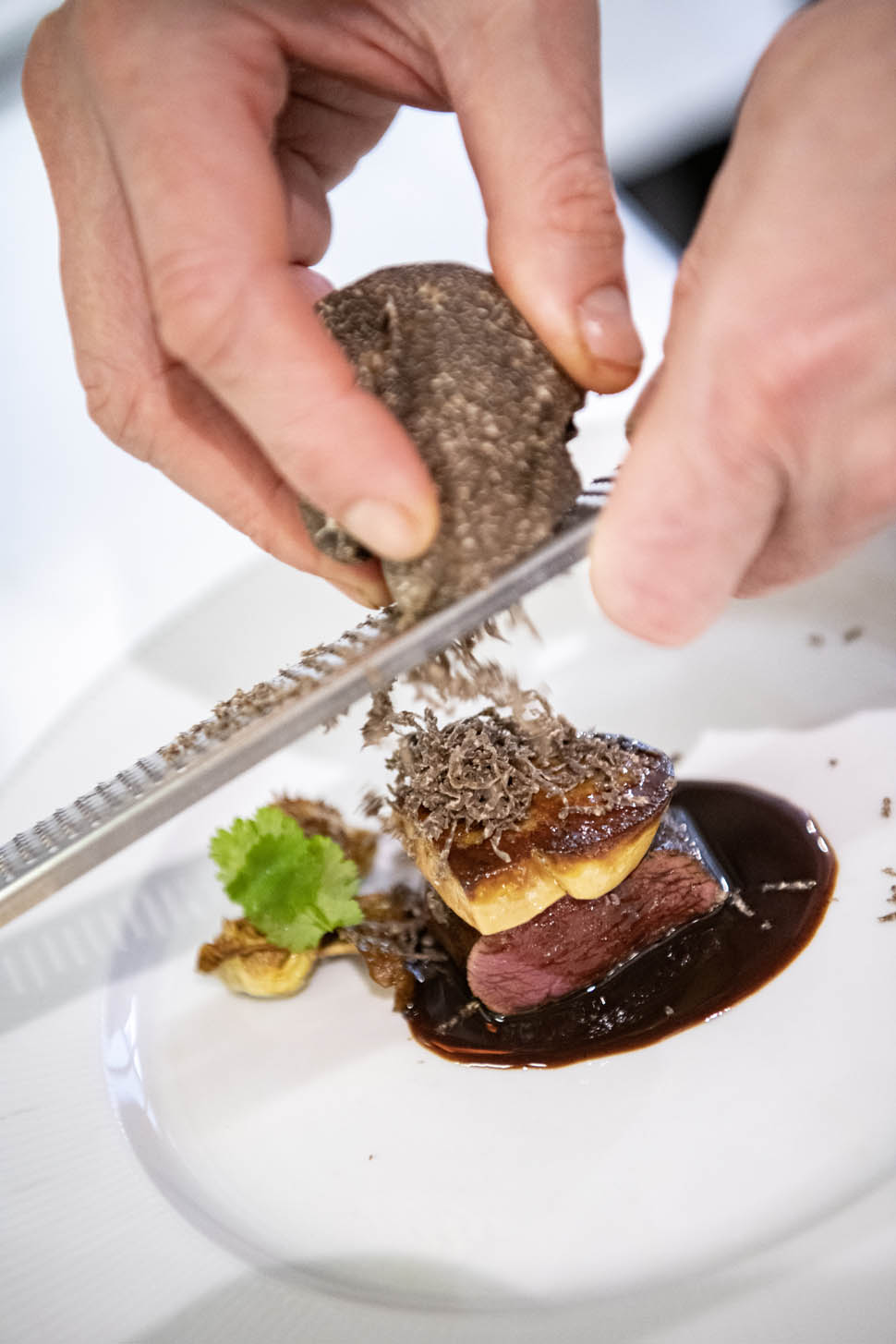
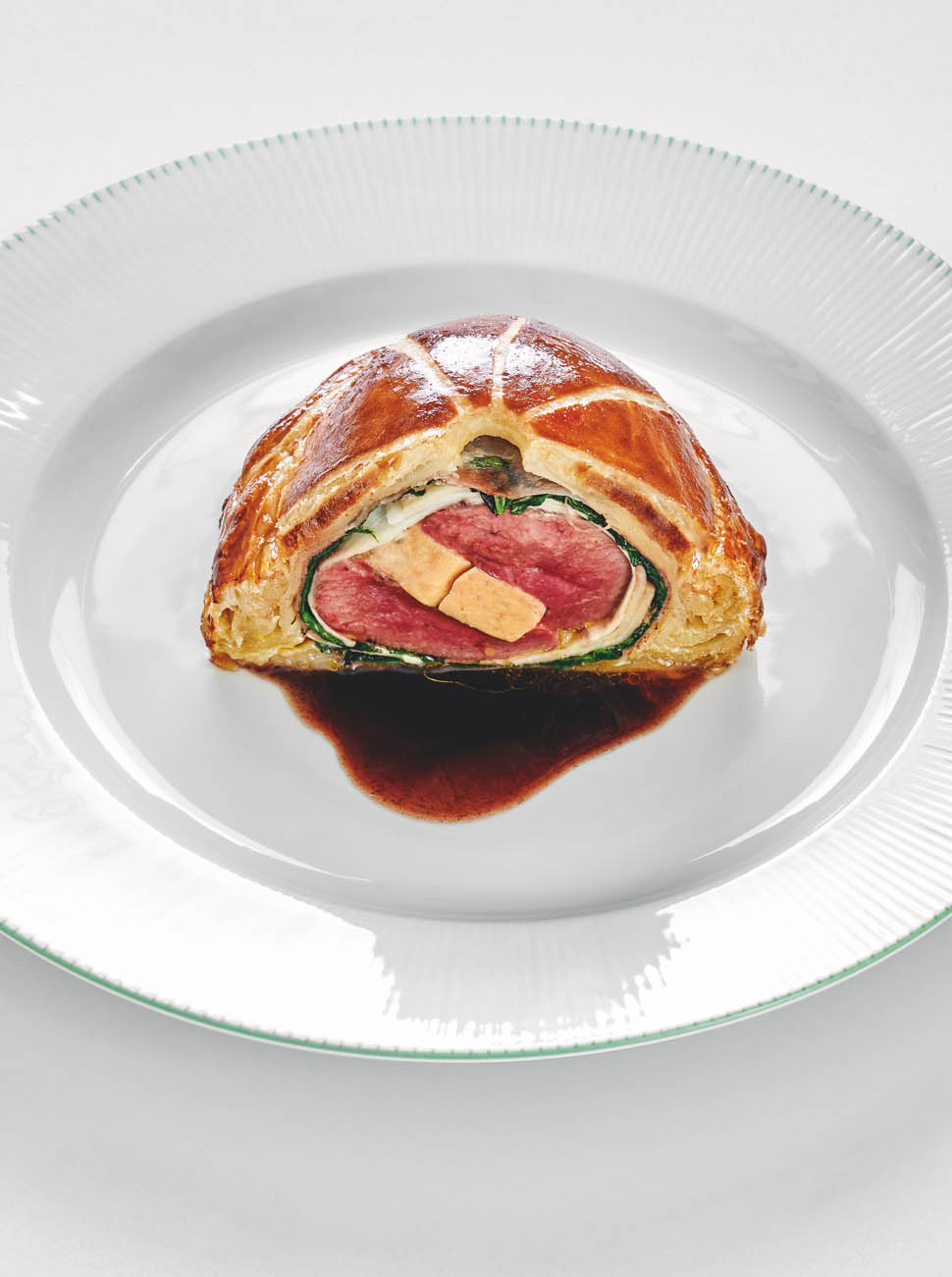
The hare according to the current mood board is slender, encircled in its feuilleté, the freshness in unison of the jelly with the buttery sweetbread stuffing, a masterpiece of seraphic lightness. The same goes for the sequitur of the hare: braised and with a blood-enriched sauce, it is paired with Brussels sprouts that are divinely crunchy. Not to mention the side dish for a last prospective reversal: a fried octopus in its cabbage kimchi. An idea without God or masters, diabolically divine.
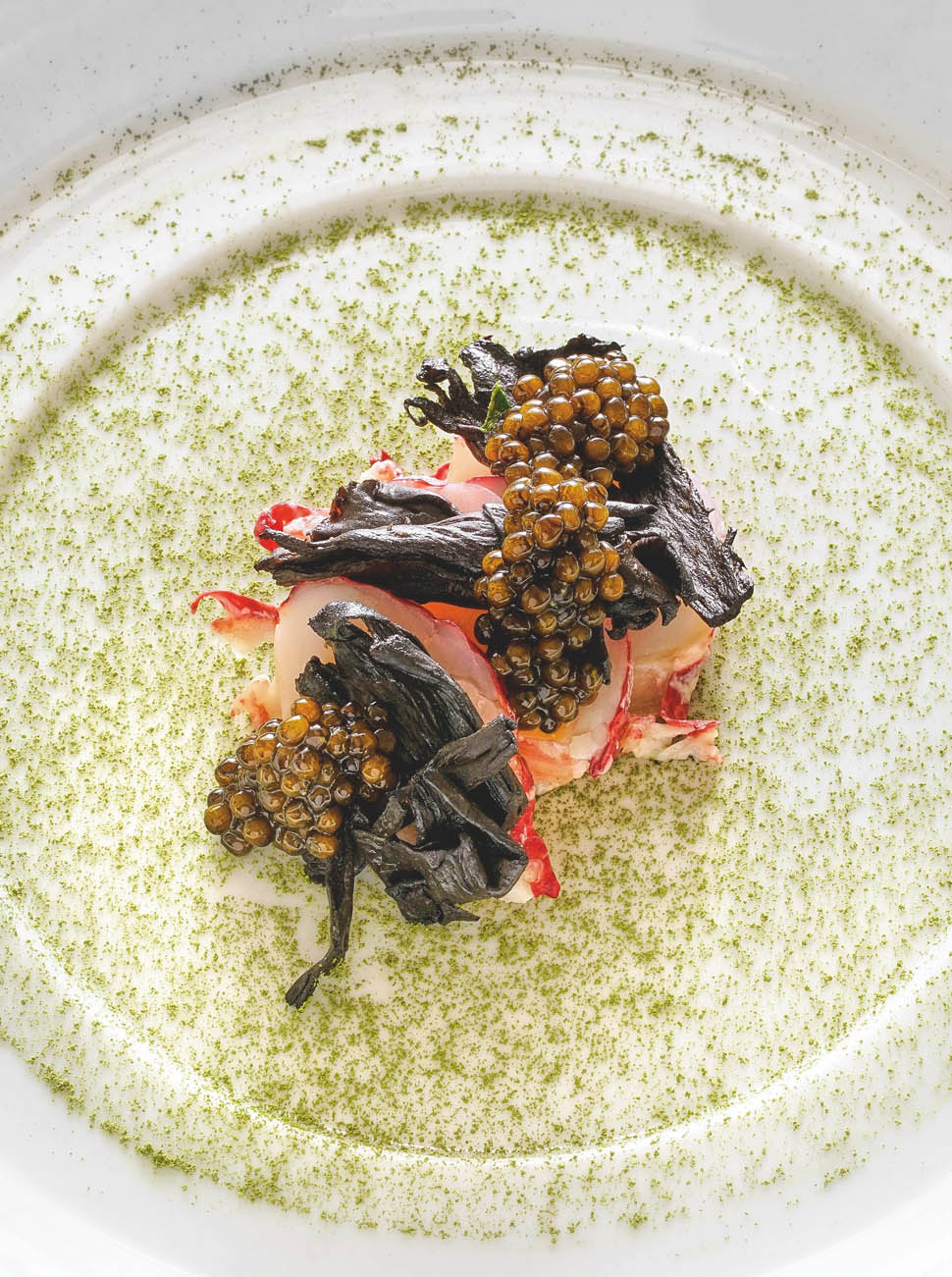
Watch out, March is around the corner, bets are opening. A third Michelin star for Le Clarence would reward the talent of an extraordinary chef. A magnificent fifty-year-old, the only one in France who is able to walk the catwalk between generations. To rekindle the dialogue between nobility, creativity, and street culture: and who could forget his little birds and birds with Chinese fried chicken to eat whole, bones included? The arduous judgment is now up to Michelin. It would certainly be a strong signal. For France but not only.
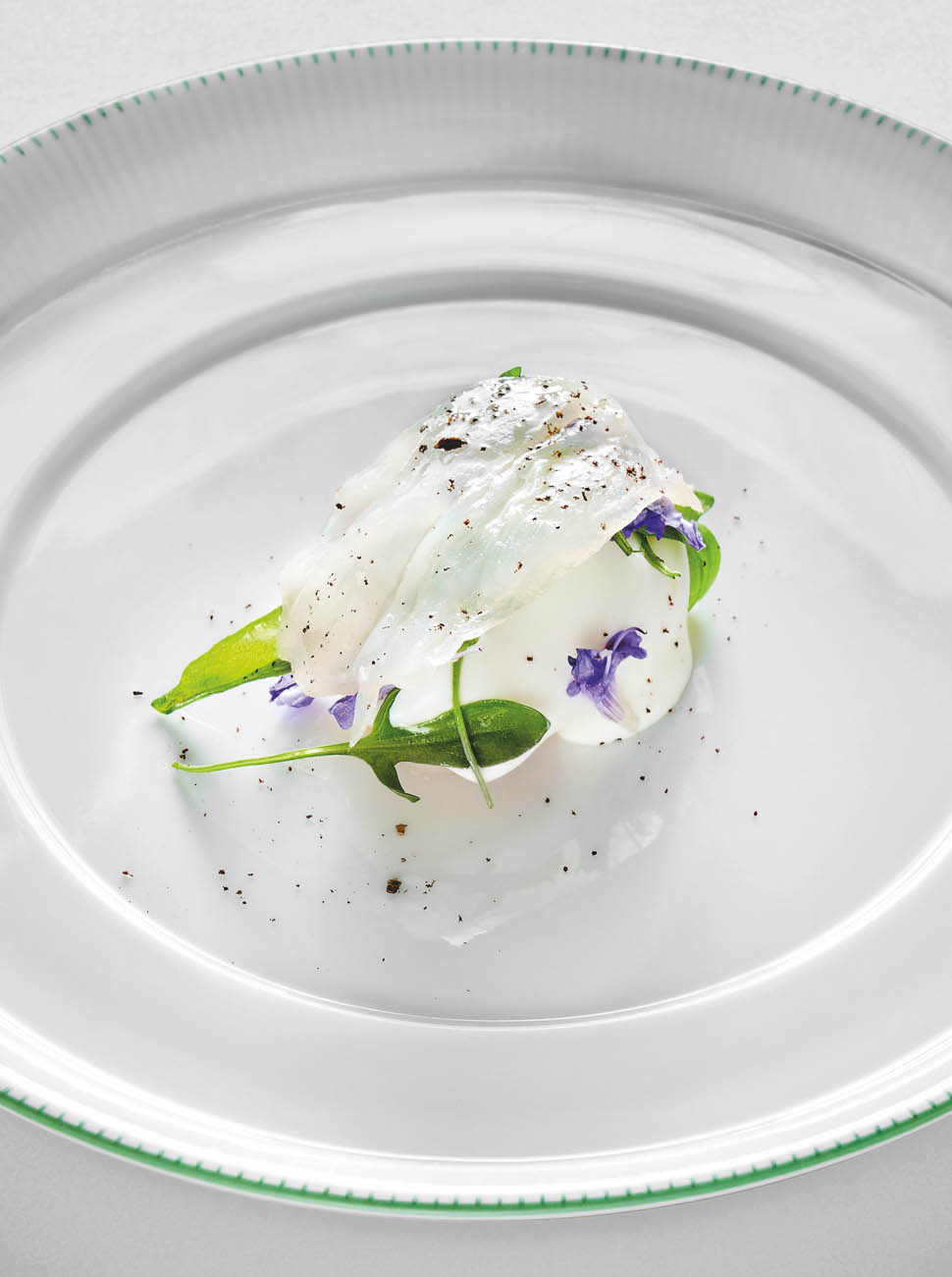
Contacts
Le Clarence
31 avenue Franklin-D.-Roosevelt, Paris, 75008, France
Tel: +33 1 82 82 10 10
